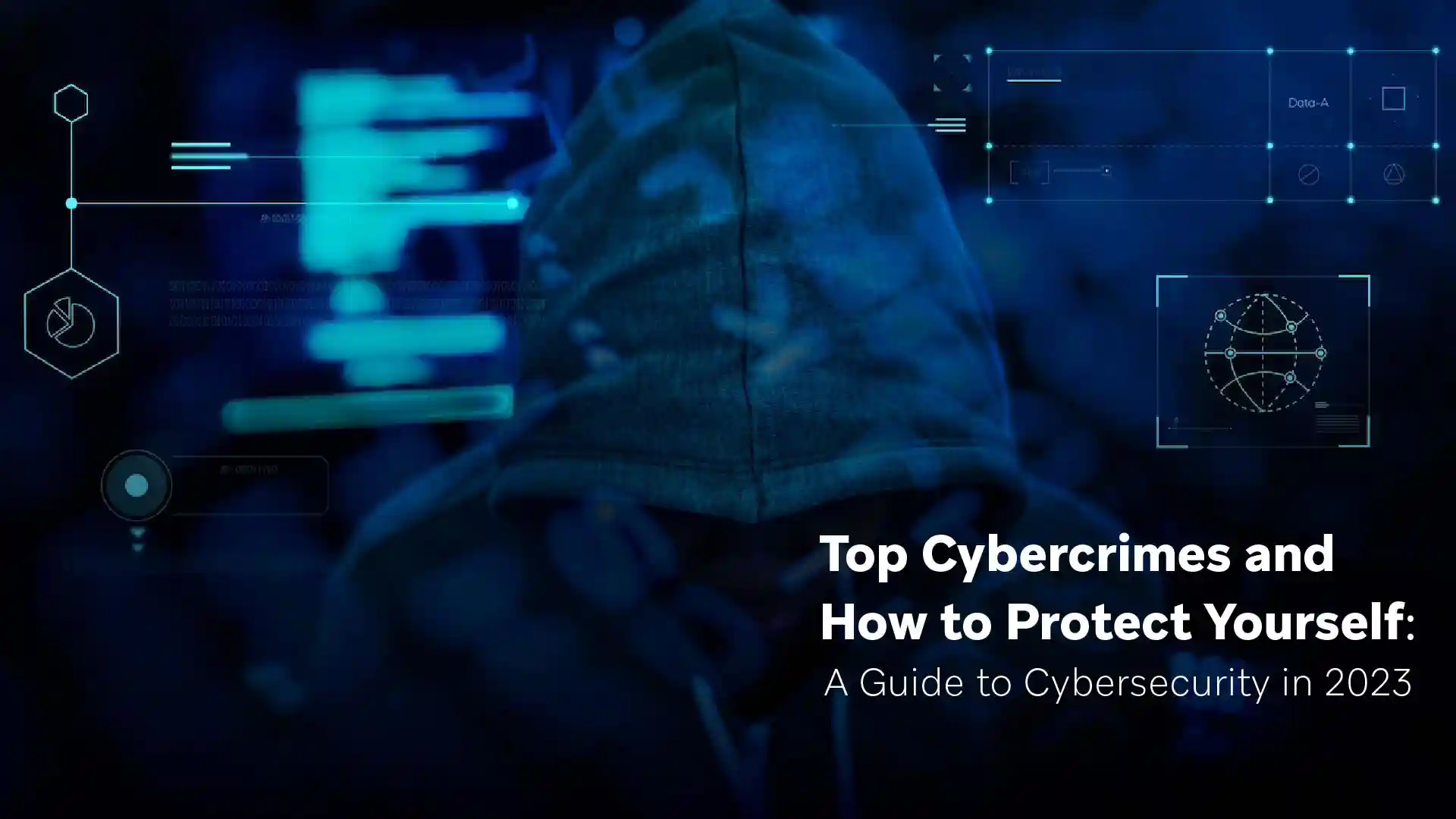 3240.0 views
3240.0 views
Top Cybercrimes and How to Protect Yourself: A Guide to Cybersecurity in 2023
Today, the internet is a powerhouse of information. It has changed the way people live and work. Today, the internet and associated technologies have contributed to the development of various digital devices.
As people's dependence on the internet and digital devices is increasing, safety hazards are always knocking on doors. The number of cyberattacks and cybercrimes is increasing worldwide.
Within the first six months of 2022, there were around 236.1 million ransomware attack attempts across the globe. Moreover, businesses have also incurred a loss of $4.35 million in 2022 due to data breaches.
With the convenience of the internet and modern technologies, we also need to be protected from such cybercrimes. This article aims to spread awareness of digital threats and security. Read on to the end!
Top Cybercrimes and How to Prevent them
Cybercrime refer to malicious activities that target digital assets, such as computers, networks, and data, with the intent of causing harm, stealing information, or disrupting operations. These cybercrimes can cause financial loss, data leaks and even physical or mental damage. These threats can come in many forms, including malware, phishing, ransomware, and social engineering. Therefore, it becomes crucial for you to know about these attacks and take the necessary steps from your end. This will ensure cyber security protection for yourself and the people around you. Cybersecurity is an approach that helps protect our digital assets from all forms of digital attack.
To start with, here are some of the types of cybercrimes that you must be aware of:
Cloud Third-Party Attacks
In 2023, the adoption of cloud computing will be significantly higher, with certain security implications. Cloud third-party attacks refer to security breaches when a cybercriminal gains unauthorised access to a cloud service or application that a third-party vendor or partner is using. This cybercrime can be particularly damaging as it can compromise not just the vendor's data but also their customers' data.
Prevention Tips:
Establish strict security protocols and requirements for third-party vendors and partners. Do regular security assessments and audits. This can help ensure that they maintain a high level of security for their cloud-based applications and services. Also, it's wise to establish multi-factor authentication and activity logging, to detect and prevent unauthorised access to sensitive data in the cloud.
Mobile Malware Attacks
Smartphones are now part of everyone's lives. That is why mobile malware attacks are one of the big threats to people.
Mobile malware attacks refer to the use of malicious software designed to target mobile devices such as smartphones and tablets. These attacks can lead to the theft of personal and sensitive information, unauthorised access to accounts, and the compromise of device functionality.
Prevention Tips:
One way to prevent mobile malware attacks is to download apps from trusted sources only. Use the official app store like Google Play or the App Store. It is also essential to keep your device's operating system and apps up to date, as these updates often include security patches that can protect against known vulnerabilities. Another helpful strategy is to install reputable antivirus software on your mobile device, which can help detect and remove malware infections.
Zero-Day Vulnerabilities in the Supply Chains
Zero-day vulnerabilities in supply chains refer to a type of cyber threat where attackers exploit unknown software vulnerabilities before the software vendor or security experts discover them. This cybercrime can be particularly dangerous within a supply chain, as it can affect multiple organisations that rely on the same software or hardware.
Prevention Tips:
One way to prevent zero-day vulnerabilities in the supply chain is to establish a comprehensive software security program that includes regular vulnerability assessments and testing. This program should involve all parties within the supply chain, including software vendors, third-party suppliers, and end-users. Organisations should also implement strong access controls and regularly monitor their systems for unusual activity or unauthorised access. Additionally, organisations should keep their software and hardware up-to-date with the latest security patches to minimise the risk of exploitation.
Phishing & Smishing
Phishing and Smishing are two common types of cybercrimes that rely on social engineering techniques to trick individuals into divulging sensitive information or downloading malicious software.
Phishing involves sending fraudulent emails or messages that appear to come from a trustworthy source, such as a bank. These messages request the recipient to click on a link or enter their login credentials. On the other hand, Smishing uses SMS text messages to achieve the same goal.
Prevention Tips:
One effective way to prevent phishing and smishing attacks is to verify the authenticity of the sender and the message before clicking on any links or providing any information. This can be done by checking the sender's email address or phone number and looking for any signs of suspicious activity or inconsistencies in the message itself. It is also essential to keep all software and security tools up to date and to use strong, unique passwords for each account.
How Can ChatGPT Increase Cyber Threats in 2023?
As a language model designed to understand and generate human-like text, ChatGPT has the potential to increase security threats in 2023. Hackers could use ChatGPT to create convincing phishing emails or social media posts that trick people into clicking on malicious links or downloading malware. They can also use AI to generate convincing fake news articles or social media posts that spread misinformation and sow discord. As ChatGPT continues to become more sophisticated, it will be increasingly difficult for security experts to detect and counteract these types of attacks. Thus measures must be put in place to ensure that ChatGPT and other AI-powered tools are used safely and securely.
How Can You Stay Safe Against Such Cyberattacks?
There are certain considerations that one should keep in mind for keeping themselves safe from these harmful digital attacks of 2023:
1. Enable Multi-Factor Authentication on All Accounts
Irrespective of what accounts you access or use, those connected to the internet should always have multi-factor authentication. With this, the chances of your devices or accounts getting hacked will be significantly less.
2. Keep Your Software Updated
Turn on automatic updates for all your devices and systems. Generally, older versions have weaker security and are thus more vulnerable. That is why hackers tend to attack devices operated with older versions.
3. Think Before Clicking on any Link
Phishing is one of the most common ways of initiating cybercrime. In 2022, more than 48% of all emails sent across the web were spam. Google blocks more than 100 million such phishing emails every single day. So, think before you click on any link that interests you in an email.
4. Make Use of High-Strength Passwords
Gone are the days when you used to keep a simple password to remember it for eternity. Ensure you create a complex password including numbers, symbols and alphabets (uppercase & lowercase). It will make it difficult for hackers to guess or crack your account passwords. Another mistake people make is saving their passwords in their phone's notepad. Don't do this. Hackers can hack your phone and access all your information.
Conclusion
So, this is a clear understanding of the top digital threats of 2023 that should always be in your mind. Remember these safety measures to keep your devices, sensitive data and finances safe from cyber attackers.

 Home
Home Buy SIM
Buy SIM





